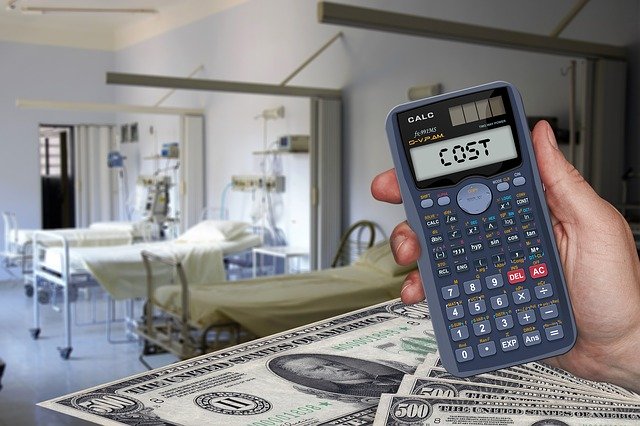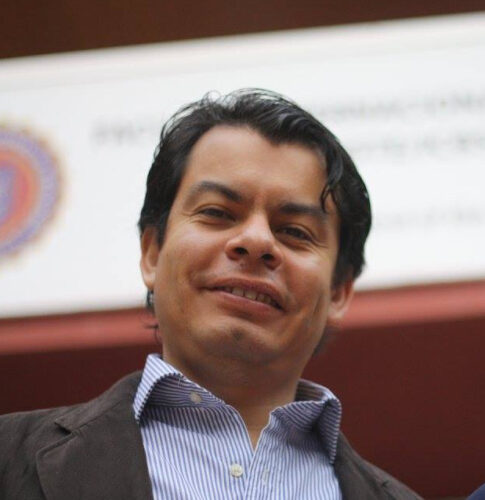This article explains how to develop a per patient clinical trial budget (test, procedure, and staff costs to be paid to the hospital for each recruited subject). If you want to download a free (per patient) Excel clinical trial budget worksheet, please visit this page. If you wish to learn about all the costs of a clinical trial, check this article. You can also download a CRO trial quote here.
Clinical trials generate several costs at the hospitals or clinical centers in which they are conducted.
Per-patient trial costs linked to a clinical site are those expenses derived from procedures and tests required per protocol and performed in the study visits.
A typical way of structuring hospital-related study costs is to divide the costs in the following two categories: (1) Per-patient costs (including procedures/tests, staff costs, and overheads), and (2) Clinical site fees.
Per Patient Costs
Per patient costs comprise clinical procedure/test expenses, staff costs, and overheads, and they are distributed in study visits (according to the calendar of assessments of the protocol).
As an example, we can consider a cancer clinical trial with the following visits:
- Screening visit / Baseline
- Treatment visits: Cycle 1 Day 1, Cycle 2 Day 1, Cycle 3 Day 1, Cycle 4 Day 1, and Cycle 5 Day 1 (21-day cycles)
- End of Treatment visit
- Follow-up visits to evaluate survival: One every 3 months during 1 year
Every clinical protocol is different and every drug has its own administration scheme, but the calendar of assessments described in this article provides a good basic idea of a typical visit calendar in oncology.
Screening Visit (Baseline)
The screening visit (baseline) is the first visit of the patient in the trial, and it is used to evaluate the eligibility of the patient (inclusion / exclusion criteria are verified).
In oncology, this initial stage normally includes the informed consent signature, tumor block collection (biopsy) for central diagnosis confirmation and/or translational studies, medical history review, collection of demographics, height, weight, vital signs, ECOG performance status, physical exam, blood count, serum biochemistry, coagulation test, pregnancy test, quality of life questionnaires, adverse events/concomitant medications, PK blood draws, electrocardiogram, and CT scan (to measure the tumor size).
In addition to the procedure/test costs for each visit, staff costs must be considered. This is essentially the time dedicated by hospital personnel: the study coordinator, the physician (investigator), and nurses.
Finally, you can add a 20-25% of overhead on the sum of procedure/test costs plus staff costs.
Screening visit / Baseline total = Procedures/tests ($2,350.00) + Staff costs ($320.00) + Overheads ($667.50) = $3,337.50
Treatment Visits
The treatment visits are those hospital visits in which the patient receives the study drug (e.g. chemotherapy infusion).
The first treatment visit will be Cycle 1 Day 1, and in the example we are describing in this article the patient will have a total of 5 treatment visits.
A typical oncology treatment visit will include the evaluation of basic elements such as weight, vital signs, ECOG, physical exam, complete blood count, full serum chemistry, adverse events, and concomitant medications.
The treatment visits (not all of them) will also include additional tests such as pregnancy tests, quality of life questionnaires, PK blood draws, and radiological assessments (CT scans).
In our example of 5 treatment visits, these are the approximate costs (including procedures/tests, staff, and overhead costs):
- Cycle 1 Day 1 = $718.75
- Cycle 2 Day 1 = $787.50
- Cycle 3 Day 1 = $2,431.25 (includes CT scan)
- Cycle 4 Day 1 = $787.50
- Cycle 5 Day 1 = $2,343.75 (includes CT scan)
- Treatment visits total = $7,068.75
End of Treatment Visit
The end of treatment visit is usually conducted 2-4 weeks after the last dose received by the patient. This visit includes the assessment of weight, vital signs, ECOG, physical exam, blood count, biochemistry, pregnancy test, quality of life form, adverse events, concomitant medications, PK blood extraction, and ECG.
End of treatment visit total = $1,125.00
Follow up Visits
Overall survival is an important endpoint in oncology trials. For this reason, once the patient has completed the study therapy, long-term follow-up visits are done to assess vital status.
In our example, follow-up visits are proposed every 3 months during one year of follow-up (4 follow-up visits in total).
During follow-up visits at least the following assessments are performed: weight, vital signs, and physical exam. Radiology tests may also be done to monitor the evolution of the tumor.
Follow-up visits total (4 visits) = $1,900.00
Therefore, the per patient costs adding up all the concepts mentioned above are: $13,431.25.
Clinical Sites Fees
Finally, clinical sites may ask for a number of additional fees, which we summarize here:
- Trial start-up fee = $1,500.00
- Site contract fee = $2,000.00
- Trial close-out fee = $1,500.00
- Pharmacy set-up fee = $2,000.00
- Total clinical site fees = $7,000.00
Other Potential Costs
There are more hospital costs that could go into the trial budget (not included in the example described in this article). These other costs may be optional and will depend on the trial sponsor’s particular strategy:
- Screen failures: Some patients start the screening process but they end up being ineligible for trial participation because they fail to meet some inclusion criteria or they finally refuse to be enrolled. Sponsors may decide to pay for screen failures, covering the costs of the screening activities actually completed.
- Patient transportation: Some sponsors may want to pay for patient transportation costs (e.g. taxi expenses to visit the hospital).
- File storage: At the end of the trial, physical documents / files will have to be stored for a number of years. Some hospitals will charge the sponsor for such storage while other sponsors can decide to keep the folders at its own offices.
Conclusion
Let’s say we have a phase 1 clinical trial in oncology recruiting a total of 18 patients. Then, the total budget of the study (related to hospital costs) will be:
18 patients x $13,431.25 + $7,000 = $248,762.50
Very important: Per patient costs can vary substantially depending on the country. For instance, a clinical trial in the United States will usually have higher costs than a study in Europe.
Please also note these are hospital-related costs only. A clinical trial involves many other expenses.
You can obtain a free quote describing all clinical trial costs here:
Download a Full CRO Clinical Trial Quotation Example
Patricio Ledesma (pledesma@sofpromed.com) helps biotech companies navigate the complexities of clinical trial planning and development in the US and Europe; from drug manufacturing to the publication of trial results. He provides comprehensive assistance for the entire trial process, a one-stop approach to avoid looking for multiple vendors. Check this article to learn how he can help.









